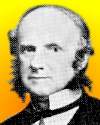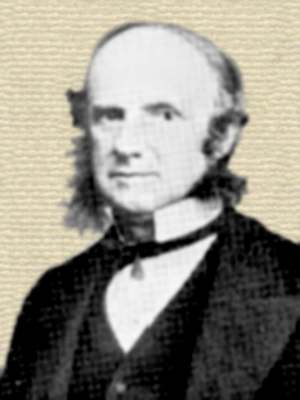 (source)
(source)
|
Charles R. Drysdale
(1829 - 2 Dec 1907)
British physician and public health scientist . He wrote The Life and Writings of Thomas R. Malthus. He also published books on the topics of syphilis, the evils of prostitution and the dangers of tobacco smoking.
|
Tobacco Chemicals.
from Tobacco and the Diseases It Produces (1875)
The species of tobacco are closely related to henbane (hyoscyamus), to atropa belladonna, and to stramonium—poisonous plants used in medicine. Tobacco alone, of all the four, is scarcely ever employed medicinally at the present day, except perhaps, occasionally, in combination with stramonium, in spasmodic asthma. Its use as an injection has been abandoned, as too dangerous to life. It is largely used by some farmers for destroying vermin infesting sheep, and commonly also by gardeners for killing the insects upon their plants. Indeed, tobacco is one of the most virulent of all vegetable poisons.
The constituent part of tobacco, which makes it at once so agreeable and so dangerous to health, is nicotine, C10H14N2, a liquid alkaloid discovered, so recently as 1809, by a French chemist. So deadly a poison is nicotine, that one tenth of a grain of it will kill a middle-sized dog in three minutes, and as the percentage of nicotine in dry tobacco varies, from two per cent in Havana to about seven per cent in Virginia tobacco, it has been calculated that in a single cigar there is enough nicotine, if given pure, to kill two men; and in about a quarter of an ounce of tobacco, there may be as much as two grains of this very dangerous poison. A smuggler, mentioned by Namias to the Académie des Sciences, was dangerously poisoned by covering his naked skin with tobacco leaves, in order to escape paying duty. The great danger of chewing tobacco is thus at once evident.
Nicotine enters the body by the stomach, the lungs, and the skin; and its effects are uniform by whatever gate it enters.
The analyses made by Eulenberg and Vohl (“Ann. d'Hygiène,” April, 1873, from “Vierteljahrsch für ger. Mod.”) seem to controvert the old theory that the injurious effects of tobacco-smoking are due directly to the presence of nicotine in the smoke. They attribute them rather to the alkaloids produced by its decomposition, and which have many similar physiological properties. The smoke from tobacco, in pipes and cigars, was passed first through a solution of potassic hydrate, and then through one of dilute sulphuric acid. The former solution was found to contain a mixture of carbonic, hydrocyanic, sulphuric, acetic, formic, metacetonic, butyric, valeric, and carbolic acids, creosote, and several hydrocarbons. The acid solution contained rosolic acid, ammonia, traces of ethylamine and many of the pyridine bases, to the last of which the injurious action is due. The bases found were pyridine, C5H5N2, which is more abundant in pipe than in cigar smoke; picoline, C6H7N; lutidine, C7H9N; collidine, C8H11N; which is more abundant in cigar than in pipe smoke; parvoline, C9H13N; coridine, C10H15N; rubidine, C11H17N; and a residue corresponding to viridine, C12H19N. As will be seen, the most volatile of the bases, as pyridine, were most abundant in pipe-smoke, while the less volatile, as collidine, were most abundant in cigar-smoke.
The physiological action of these bases was not tested separately, but only that of a mixture of those which volatilize under 320° F., and of those which volatile between 320° F. and 482° F. Both of these sets of bases, like nicotine, produced contraction of the pupil, difficult respiration, general convulsions, and death; and, upon post mortem examination, the respiratory passages and lungs were found congested. They do not act as rapidly as nicotine. Those volatile at a low temperature were more active than those which were only volatile at a high temperature, which explains the fact that more tobacco can be smoked in the form of cigars than in a pipe.
The alkaloids are soluble in the mucus of the mouth and air-passages: and thus smoke condensed and mingled with water is easily taken into the blood. Hence, when cigars or pipes are smoked, even out-of-doors, a notable quantity of poison is taken into the system. But, when smoking takes place in a small room, the air taken into the lungs also adds its poison to the fluids of the air-passages; and persons who remain in smoking-rooms, even if not themselves smoking, cannot escape a certain amount of poisoning. Women who wait in public bar-rooms and smoking-saloons. though not themselves smoking, cannot avoid the poisoning caused by inhaling smoke continually. Surely gallantry, if not common honesty, should suggest the practical inference from this fact.
- Science Quotes by Charles R. Drysdale.
- 2 Dec - short biography, births, deaths and events on date of Drysdale's death.
- Charles R. Drysdale - Tobacco and the Diseases it Produces - letter to The Times (1878).
- The Dangers of Smoking - A Reminiscence by Hudson Maxim (1924)
- Tobacco: A Cultural History of How an Exotic Plant Seduced Civilization, by Iain Gately. - book suggestion.
- Booklist for Tobacco Health History.





